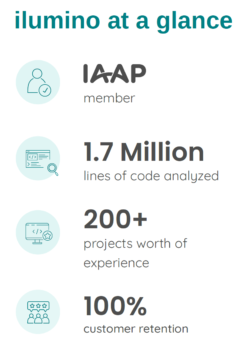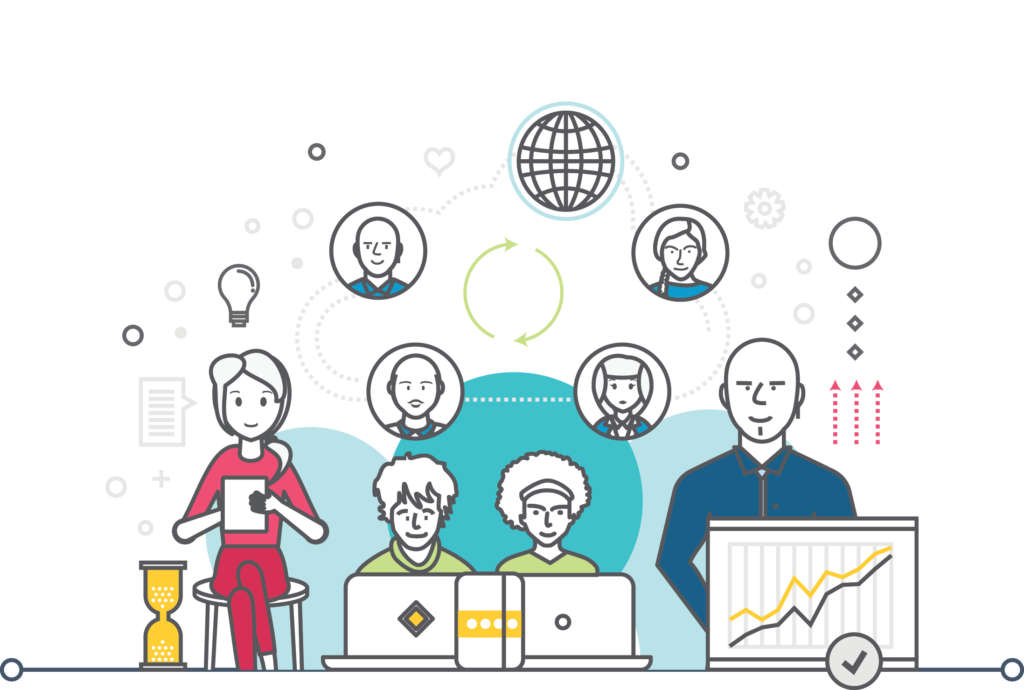Get the Right Team on the Case
Do you know who to call if an RFP calls for a Voluntary Product Accessibility Template (VPAT)? What if you find yourself the target of a lawsuit claiming noncompliance with Title III of the Americans with Disabilities Act (ADA)? What if you just want to make sure all your stakeholders have equivalent experiences when they visit your website or use your technologies? Having the right accessibility resources on the job has never been more important. But what does that mean?
The question about accessibility resources can be overwhelming. That can lead to time and money wasted on “solutions” that feel like shortcuts, but really are not solving the problem. Many companies are tempted by the “one-size-fits-all” solutions, including accessibility overlays, badges, and automated-only scans, but most “accessible off-the-shelf” templates are not viable long-term solutions, nor do they actually meet compliance guidelines.
The problem with the solutions described above is that they are focused on taking the people out of the picture instead of putting them front and center. Yes, there are many technology enablers, both to help people with various impairments navigate the world, and for companies trying to make their part of the world equally accessible for all. But there is no technology that will fully replace or substitute for a human.
How Human Accessibility Resources Change the Game
People make all the difference when it comes to accessibility resources. Truly qualified human-enabled accessibility resources remain rare, and it can be hard to separate the wheat from the chaff. When you start to look for the right team to help with compliance on your website and other digital assets, notably software and apps, consider these criteria:
Technical Expertise
Many “solutions” rely upon a fully automated assessment process, which means they miss a lot of issues and overstate others. Genuine site accessibility requires you to go to the source: your code.
Look for experts who specialize in manual assessment and remediation. One way to identify people who are familiar with the subject matter is to look for a Certified Professional of Accessibility Core Competencies (CPACC) from the International Association of Accessibility Professionals (IAAP).
You should also ask a lot of questions. More on that below.
Inclusive Mindset
But this certification alone doesn’t deem someone an expert. The optimal expert services also render reliable solutions by focusing on usability as well as compliance. Understanding how all users and assistive devices interact with the web and technology is critical for a holistic approach to meeting the guidelines.
Look for accessibility resources that go beyond compliance to ensure that the solutions they’re providing are improving the experience for all users. Optimal accessibility fixes enable people with visual, physical, auditory, cognitive and other impairments to use your website and other digital assets without compromising brand standards or sacrificing overall functionality.
Traditional accessibility without usability in mind can actually harm your efforts toward inclusion if not approached holistically. The goal is to include all users.
How to Determine Accessibility Resources Quality
The legal landscape, with one digital accessibility lawsuit filed per hour in 2019, proves status-quo or one-size-fits-all solutions are unsuccessful. Why invest in something that doesn’t solve the problem?
That question begs another. How do you identify the right solution? If you’re like most people, this is all a bit mysterious and confusing. We recommend a little research, including a few key questions that can help point you in the right direction. For example:
- HOW does the solution identify and address accessibility issues? (Hint: beware of “fully-automated” offers – one line of code won’t fix your whole site!)
- WHERE does the process begin and end? (Hint: if it ends with a report but no execution of accessibility fixes, it’s not much help.)
- WHAT does the promised accessibility certificate, statement, badge, or report actually mean? (Hint: if it asserts compliance without any manual effort, it’s fake.)
- WHO is doing and/or checking the work? (Hint: expert accessibility developers know the guidelines, best practices, and strategies that allow you to solve issues and workflow problems without changing existing processes.)
Case In Point: Digital Accessibility Resources that Measure Up
Our approach starts with genuine care for the intention of inclusion and accessibility. We deliver through some of the most
 talented, qualified accessibility resources in the business; not only are we accessibility experts, but we’re also skilled developers, designers, and UX professionals.
talented, qualified accessibility resources in the business; not only are we accessibility experts, but we’re also skilled developers, designers, and UX professionals.
That means we are able to tailor custom solutions to work within your unique environment to make accessibility compliance simple for you. We do that by sharing our expertise in website, application, product, software, document, and digital media compliance. Our educational process enables teams to understand, take ownership, and maintain compliance goals long term.
Our responsibility to you is to provide complete solutions that deliver the education, expertise, and tools that you need to succeed. We empower organizations to create and maintain barrier-free products that are properly designed and coded for all users, resulting in increased market reach and brand loyalty.
A great fit for enterprise organizations with strong brands to protect and enhance, our leadership team takes a tailored hands-on approach to each accessibility challenge. We invite you to contact us so that we can learn more about your organization’s needs.
Join the conversation on LinkedIn, Twitter, Facebook, and
Instagram.
